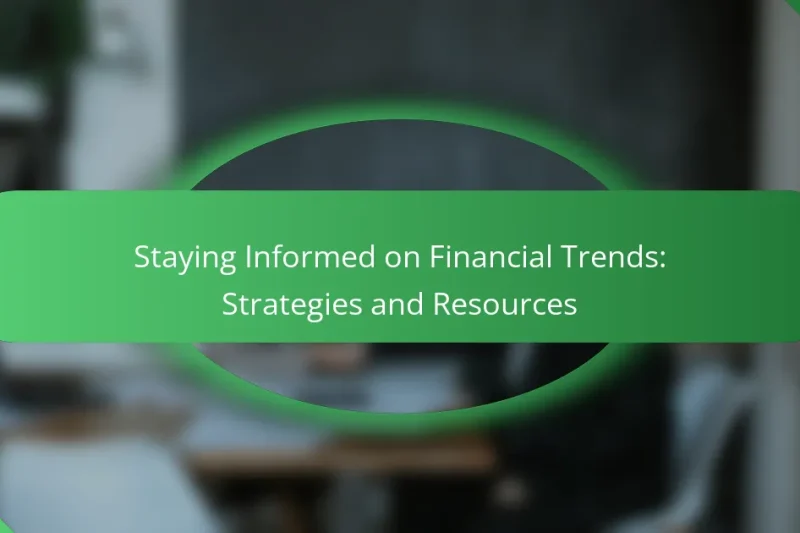In today’s economy, financial literacy is essential for individuals to effectively manage their finances and make … Financial Literacy: Importance in Today’s EconomyRead more
Wealth Management System: Financial Education
A comprehensive wealth management system is essential for effective financial planning and investment oversight. By integrating robust financial education, individuals can enhance their decision-making capabilities, leading to better investment choices and long-term wealth growth. Prioritizing user-friendly interfaces and tailored guidance ensures that users can navigate their financial journeys with confidence.
Teaching Kids About Money: Practical Strategies for Parents
Teaching kids about money is essential for fostering financial literacy and responsible money management from an … Teaching Kids About Money: Practical Strategies for ParentsRead more
Financial Terms: Key Definitions for Beginners
For beginners navigating the world of finance, grasping essential terms such as assets, liabilities, and equity … Financial Terms: Key Definitions for BeginnersRead more
Staying Informed on Financial Trends: Strategies and Resources
Staying informed on financial trends is essential for making sound investment decisions and navigating the ever-changing … Staying Informed on Financial Trends: Strategies and ResourcesRead more
Workshops vs. Online Learning: Which Is Better for Financial Skills
When it comes to developing financial skills, both workshops and online learning present unique advantages. Workshops … Workshops vs. Online Learning: Which Is Better for Financial SkillsRead more
Online Courses for Personal Finance: Top Learning Platforms
In today’s fast-paced world, enhancing your financial literacy is essential, and online courses offer a convenient … Online Courses for Personal Finance: Top Learning PlatformsRead more
Essential Financial Books: Recommendations for Young Adults
For young adults in Australia, exploring essential financial books can be a transformative step towards mastering … Essential Financial Books: Recommendations for Young AdultsRead more
What are the best wealth management systems in Australia?
The best wealth management systems in Australia offer a range of investment options, user-friendly interfaces, and robust financial planning tools. These platforms cater to various investment styles and goals, making it easier for individuals to manage their wealth effectively.
Wealthfront
Wealthfront is a popular automated investment service that focuses on passive investing through low-cost index funds. It offers features such as tax-loss harvesting and financial planning tools, making it suitable for those looking to grow their wealth over time.
Investors can start with a low minimum investment, and the platform charges a competitive management fee. Wealthfront’s user-friendly interface allows for easy tracking of investment performance and financial goals.
Betterment
Betterment is another leading robo-advisor that emphasizes personalized financial advice and automated portfolio management. It provides users with tailored investment strategies based on their risk tolerance and financial objectives.
With no minimum balance requirement, Betterment is accessible to a wide range of investors. The platform also offers tax-efficient investing options, making it an attractive choice for those looking to maximize their returns.
Personal Capital
Personal Capital combines wealth management with financial planning tools, allowing users to track their investments and overall financial health in one place. It provides a comprehensive view of assets, liabilities, and cash flow.
The platform offers free financial tools, but users can also opt for paid wealth management services. Personal Capital is ideal for individuals seeking a holistic approach to managing their finances.
Stockspot
Stockspot is an Australian robo-advisor that focuses on low-cost, diversified investment portfolios. It uses a unique algorithm to create personalized investment strategies based on user preferences and risk profiles.
With a low minimum investment requirement, Stockspot is accessible to many investors. The platform also emphasizes transparency, providing users with clear information about fees and performance.
Spaceship
Spaceship is an innovative investment platform that targets younger investors interested in technology and growth-oriented portfolios. It offers a selection of exchange-traded funds (ETFs) focused on high-growth sectors.
Spaceship has no minimum investment, making it easy for new investors to start. The platform’s engaging interface and educational resources help users understand investment concepts and make informed decisions.
How can financial education improve wealth management?
Financial education enhances wealth management by equipping individuals with the knowledge and skills necessary to make informed financial decisions. This understanding leads to better investment choices, increased financial literacy, and effective long-term planning.
Enhances investment decision-making
Financial education provides the tools to analyze investment opportunities critically. Investors who understand market trends, risk assessment, and asset allocation are more likely to make sound decisions that align with their financial goals.
For example, a well-educated investor can differentiate between high-risk stocks and stable bonds, allowing for a diversified portfolio that balances risk and return. This strategic approach can lead to improved investment performance over time.
Increases financial literacy
Increased financial literacy empowers individuals to understand complex financial concepts such as interest rates, inflation, and investment vehicles. This knowledge helps in navigating financial products and services more effectively.
For instance, knowing how compound interest works can motivate individuals to save more, as they realize the long-term benefits of early and consistent investing. Financial literacy also aids in avoiding common pitfalls, such as high-fee investment options.
Promotes long-term planning
Financial education encourages individuals to think beyond immediate financial needs and plan for the future. Understanding concepts like retirement savings, tax implications, and estate planning is crucial for building lasting wealth.
Setting clear financial goals, such as saving for retirement or a child’s education, becomes easier with a solid foundation in financial principles. Regularly reviewing and adjusting these plans ensures that individuals stay on track to meet their objectives, even as circumstances change.
What features should you look for in a wealth management system?
When selecting a wealth management system, prioritize features that enhance investment oversight, provide tailored financial guidance, and optimize tax efficiency. These elements are crucial for effective financial planning and long-term wealth growth.
Investment tracking tools
Investment tracking tools are essential for monitoring portfolio performance and asset allocation. Look for systems that offer real-time updates, performance analytics, and customizable dashboards to visualize your investments effectively.
Consider tools that allow you to set alerts for significant market changes or portfolio shifts. This proactive approach helps you make timely decisions and adjust your strategy as needed.
Personalized financial advice
Personalized financial advice is a key feature that tailors recommendations based on your unique financial situation and goals. A good wealth management system should include access to certified financial advisors who can provide insights aligned with your risk tolerance and investment objectives.
Seek systems that utilize algorithms to analyze your financial data and suggest strategies for growth. This combination of human expertise and technology can enhance your investment outcomes.
Tax optimization strategies
Tax optimization strategies help minimize your tax liabilities while maximizing investment returns. Look for wealth management systems that offer tools for tax-loss harvesting, asset location strategies, and guidance on tax-efficient investment vehicles.
Understanding how different investments are taxed can significantly impact your overall returns. Ensure the system provides resources to help you navigate tax regulations relevant to your country, such as capital gains tax rates or retirement account contributions.
How to choose the right wealth management system?
Choosing the right wealth management system involves evaluating your financial needs, understanding the services offered, and comparing costs. A well-suited system can help you achieve your financial goals effectively while minimizing fees.
Assess your financial goals
Start by clearly defining your financial objectives, such as retirement planning, saving for education, or wealth preservation. Understanding your goals will guide you in selecting a system that aligns with your long-term vision.
Consider factors like your risk tolerance and investment timeline. For instance, if you are planning for retirement in 20 years, a system that focuses on growth-oriented investments may be more suitable than one that prioritizes immediate income.
Compare fees and services
Different wealth management systems have varying fee structures, which can significantly impact your returns. Look for systems that offer transparent pricing, including management fees, transaction costs, and any hidden charges.
Evaluate the services provided, such as financial planning, tax advice, and investment management. A system that combines multiple services may provide better value, especially if you require comprehensive support.
Read user reviews and testimonials
User reviews and testimonials can provide valuable insights into the effectiveness and reliability of a wealth management system. Look for feedback on customer service, ease of use, and overall satisfaction.
Consider checking independent review sites and forums to gather a range of opinions. Pay attention to recurring themes in the reviews, such as responsiveness or the quality of financial advice, to make an informed decision.
What are the costs associated with wealth management systems?
Wealth management systems typically involve several costs that can impact overall investment returns. Understanding these expenses, including management, transaction, and advisory fees, is crucial for making informed financial decisions.
Management fees
Management fees are charged by wealth management firms for overseeing your investment portfolio. These fees usually range from 0.5% to 2% of assets under management (AUM) annually, depending on the complexity of services provided.
When evaluating management fees, consider the level of service and expertise offered. A higher fee may be justified if the firm provides personalized strategies or access to exclusive investment opportunities.
Transaction fees
Transaction fees are incurred each time a trade is executed within your investment account. These can include commissions for buying or selling stocks, bonds, or other securities, and may vary widely based on the brokerage or wealth management service.
Some firms offer commission-free trading, while others may charge a flat fee or a percentage of the trade value. It’s essential to understand these costs, as frequent trading can significantly erode your investment returns over time.
Advisory fees
Advisory fees are charged for financial planning and investment advice, typically structured as a flat fee or hourly rate. These fees can range from a few hundred to several thousand dollars, depending on the complexity of your financial situation and the advisor’s experience.
When selecting an advisor, assess their fee structure and ensure it aligns with your financial goals. Be cautious of hidden fees that may not be immediately apparent, as these can add up and affect your overall investment performance.
What are the benefits of using a digital wealth management platform?
A digital wealth management platform offers numerous advantages, including enhanced accessibility, personalized investment strategies, and cost efficiency. These platforms leverage technology to provide users with real-time insights and automated tools that simplify financial decision-making.
Accessibility and Convenience
Digital wealth management platforms are available 24/7, allowing users to manage their investments from anywhere with an internet connection. This flexibility is crucial for busy individuals who may not have time to meet with a financial advisor in person.
Many platforms also offer mobile applications, enabling users to track their portfolios and execute trades on-the-go. This level of accessibility ensures that users can respond quickly to market changes or personal financial needs.
Cost Efficiency
Using a digital wealth management platform often results in lower fees compared to traditional financial advisory services. Many platforms operate on a fee-only model, charging a percentage of assets under management, which can be significantly lower than commission-based structures.
Additionally, automated investment strategies, such as robo-advisors, can help reduce costs by minimizing the need for human intervention. This efficiency can lead to better returns over time, especially for smaller investors.
Personalized Investment Strategies
Digital platforms typically use algorithms and data analytics to create tailored investment strategies based on individual risk tolerance and financial goals. This personalization helps users align their investment choices with their specific needs.
Many platforms also provide educational resources and tools to help users understand their investment options better. This empowers individuals to make informed decisions and adjust their strategies as their financial situations evolve.






